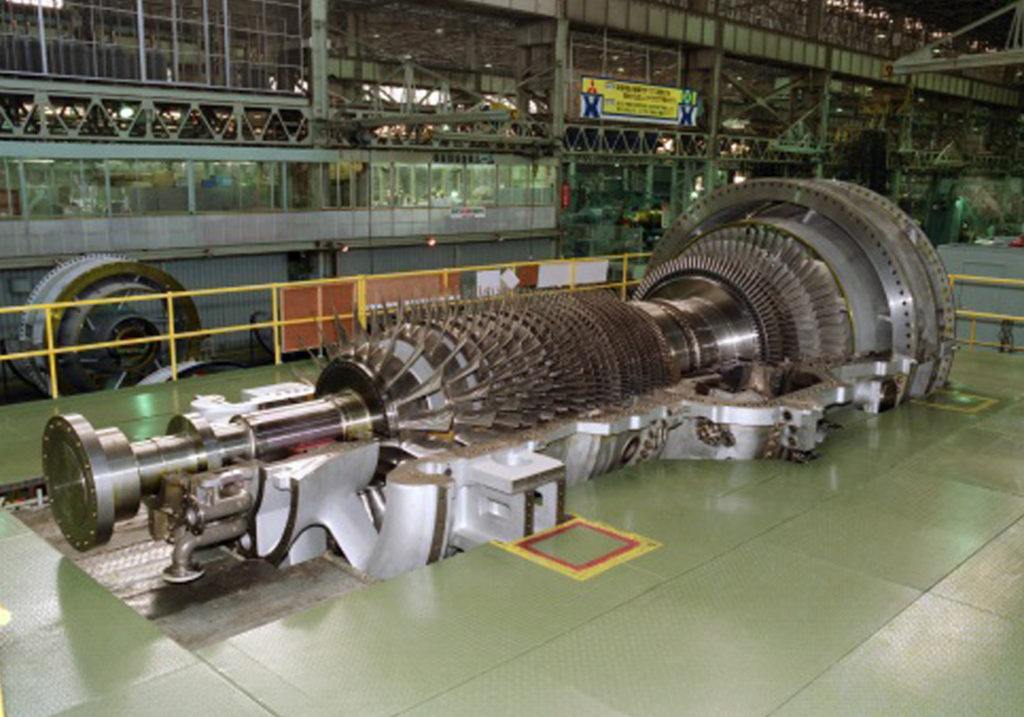Natural gas is a fossil fuel that generates electricity through combustion. It burns cleanly, producing fewer emissions than other fossil fuels and making it a popular choice for power generation. Here is a list of natural gas turbine generators. For more information about natural gas generators, you can learn more here.
- Simple cycle gas turbines.
- Combined cycle gas turbines.
- Internal combustion engines.
- Fuel cells.
Simple cycle gas turbines consist of a gas turbine connected to a generator, which converts the turbine’s mechanical energy into electricity. These plants are the most basic and quickest to build and are often used to meet peak demand or as backup power in emergencies. Combined cycle gas turbines provide better efficiencies because they use the waste heat from the gas turbine to generate additional electricity. They consist of a gas turbine and a steam turbine connected to a generator. The gas turbine generates electricity, and the waste heat produces steam, which drives the steam turbine to generate additional electricity.
Internal combustion engines use natural gas to convert chemical energy into mechanical energy, generating electricity. These engines are used in small-scale power plants and combined heat and power systems. The latter use waste heat from the engine to produce hot water or steam for heating or other industrial processes. Fuel cells generate electricity through an electrochemical process rather than combustion. As a result, they can use natural gas as fuel, are highly efficient, and produce very few emissions. Fuel cells are used in various applications, including stationary power generation and transportation.
There are also advanced natural gas power generation technologies in development, such as advanced combined cycle systems and integrated gasification combined cycle systems. These technologies have the potential to significantly increase efficiency and reduce emissions from natural gas power plants. Overall, natural gas is a versatile and clean-burning fuel that has a significant role in the future of electricity generation. It can be used in various power generation technologies, potentially reducing greenhouse gas emissions and improving air quality significantly.
Interesting in renewable energy and how it benefits the energy grid? Read more here.
Types of Natural Gas Turbine Generators
- Gas steam: A gas steam power plant generates electricity by burning natural gas or other fossil fuels to produce steam, which drives a steam turbine connected to a generator. The generator converts the mechanical energy of the steam turbine into electricity.
- Simple cycle: A simple cycle gas turbine power plant generates electricity by burning natural gas or other fossil fuels in a gas turbine. The gas turbine is connected to a generator, which converts the mechanical energy of the turbine into electricity.
- Combined cycle: A combined cycle gas turbine power plant generates electricity by burning natural gas or other fossil fuels in a gas turbine, which drives a generator to produce electricity. The waste heat from the gas turbine is used to produce steam, which drives a steam turbine connected to a generator to produce additional electricity.
- Reciprocating engine: A reciprocating engine power plant generates electricity by burning natural gas or other fossil fuels in an internal combustion engine. The engine converts the chemical energy of the fuel into mechanical energy, which drives a generator to produce electricity. Reciprocating engines are often used in small-scale power plants and combined heat and power systems.
